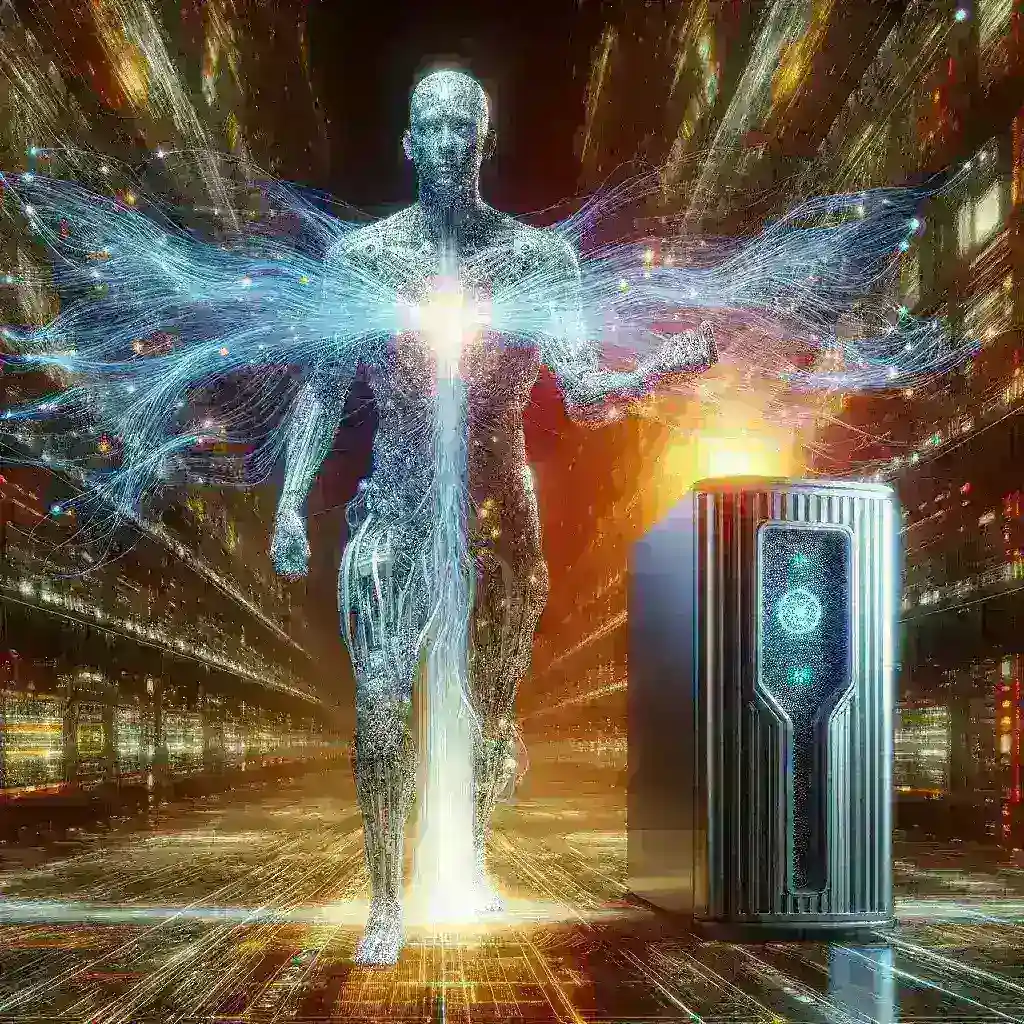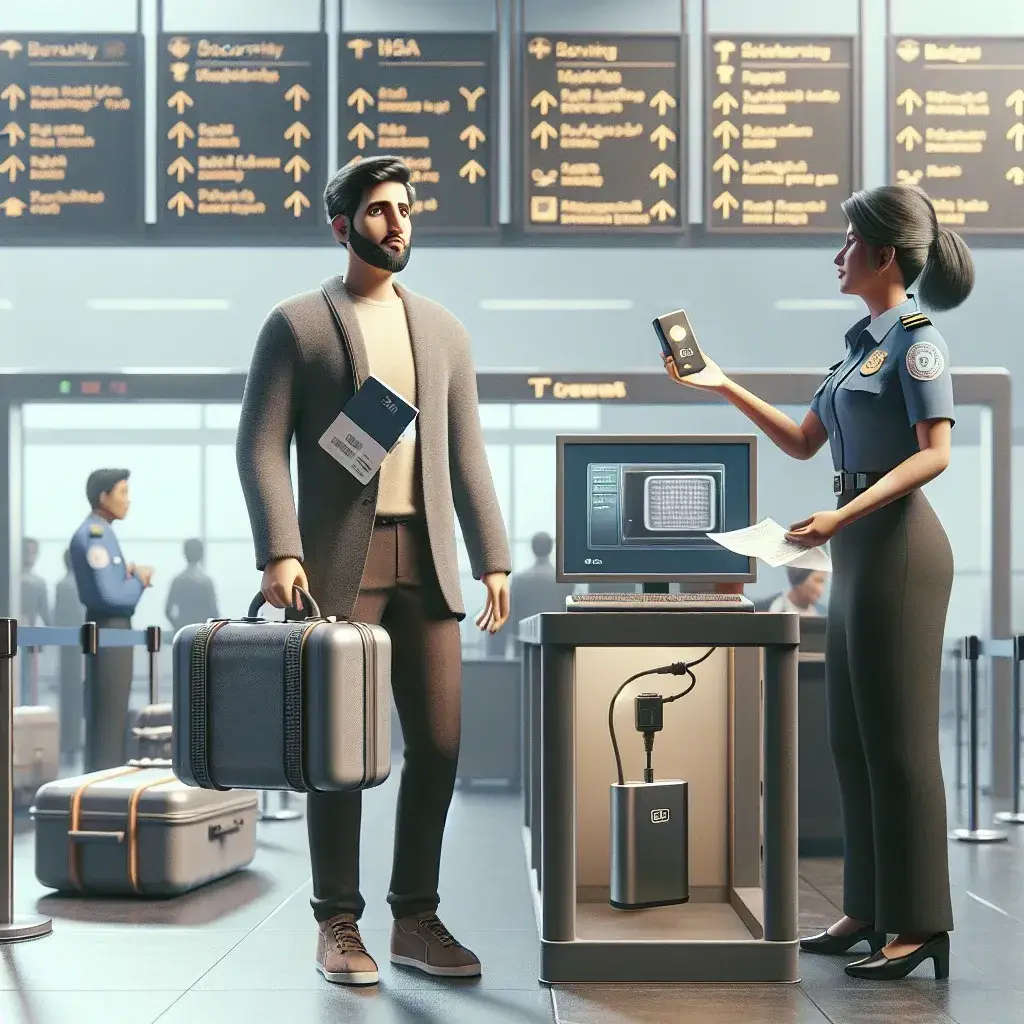Introduction to Nvidia Isaac Groot
In the rapidly evolving landscape of artificial intelligence and robotics, Nvidia has emerged as a pioneering force with its innovative technologies. Among its groundbreaking developments, Nvidia Isaac Groot stands out as a transformative platform designed to revolutionize the way we develop, deploy, and scale AI-powered robotic applications. This comprehensive framework, working in tandem with DGX Spark supercomputers, represents a significant leap forward in autonomous systems development.
The world of robotics and AI has long faced challenges in terms of computational power, development efficiency, and scalability. Traditional approaches to robotics development often involved fragmented tools and limited processing capabilities, resulting in prolonged development cycles and constrained innovation. Nvidia’s introduction of Isaac Groot addresses these pain points by providing an integrated, high-performance ecosystem that empowers developers, researchers, and enterprises to push the boundaries of what’s possible in robotic intelligence.
The Genesis and Evolution of Nvidia Isaac Groot
The story of Isaac Groot begins with Nvidia’s vision to democratize AI and robotics development. Named after both Isaac Newton, symbolizing groundbreaking scientific advancement, and the character Groot from popular culture, representing adaptability and growth, this platform embodies the company’s commitment to nurturing the future of intelligent machines.
Initially launched as part of the broader Nvidia Isaac ecosystem, Groot evolved from earlier iterations of Nvidia’s robotics development tools. The platform has undergone significant refinements over time, incorporating feedback from the developer community and adapting to emerging industry needs. Today, it represents a mature, enterprise-ready solution that stands at the intersection of robotics, AI, and high-performance computing.
The evolution of Isaac Groot parallels the advancement of Nvidia’s hardware capabilities, particularly the development of the DGX platform. This synergistic relationship between software frameworks and hardware infrastructure has been instrumental in creating a cohesive ecosystem that addresses the end-to-end requirements of modern robotics development.
Core Components and Architecture of Isaac Groot
At its foundation, Isaac Groot comprises several interconnected components that work in harmony to facilitate robotics development:
- Groot Development Kit (GDK): A comprehensive set of libraries, APIs, and tools that provide the building blocks for creating advanced robotic applications.
- Simulation Environment: A physics-accurate virtual testing ground that allows developers to validate robotic behaviors before deployment to physical systems.
- AI Model Framework: An integrated system for training, optimizing, and deploying neural networks specifically tailored for robotic perception and decision-making.
- Deployment Manager: Tools for efficiently transitioning applications from development to production environments, with support for various hardware configurations.
- Analytics Suite: Capabilities for monitoring, analyzing, and improving robotic performance through data-driven insights.
The architecture of Isaac Groot follows a modular design philosophy, allowing developers to leverage only the components they need while maintaining compatibility across the ecosystem. This flexibility makes it suitable for a wide range of applications, from industrial automation to autonomous vehicles and service robots.
The Technical Foundation of Isaac Groot
Diving deeper into the technical aspects, Isaac Groot is built upon several key technologies:
- CUDA Acceleration: Leverages Nvidia’s parallel computing platform to execute complex computational tasks with remarkable efficiency.
- TensorRT: An SDK for high-performance deep learning inference, optimizing neural network deployment on Nvidia hardware.
- ROS Integration: Seamless compatibility with the Robot Operating System, the de facto standard in robotics development.
- Graph-based Computation: Employs a computational graph approach that enables efficient data flow and processing across different modules.
- Containerization: Utilizes Docker containers for consistent development and deployment experiences across environments.
This technical foundation ensures that Isaac Groot can handle the demanding requirements of modern robotics applications, from real-time sensor processing to complex decision-making algorithms.
Understanding DGX Spark Supercomputers
To fully appreciate how Isaac Groot transforms robotics development, we must understand its hardware counterpart: DGX Spark supercomputers. These specialized computing systems represent Nvidia’s answer to the intensive computational demands of AI and robotics development.
The Architecture of DGX Spark
DGX Spark supercomputers are purpose-built AI infrastructure solutions that combine:
- GPU Clusters: Multiple Nvidia A100 or H100 Tensor Core GPUs working in parallel to deliver unprecedented computational performance.
- High-bandwidth Interconnects: NVLink and NVSwitch technologies that enable seamless communication between GPUs, minimizing data transfer bottlenecks.
- Optimized Software Stack: Pre-configured with Nvidia’s AI and HPC software libraries, including CUDA-X, cuDNN, and TensorRT.
- Scalable Design: Modular architecture that can be expanded from single nodes to multi-rack configurations, accommodating growing computational needs.
- Enterprise-grade Storage: High-performance storage solutions optimized for AI workloads and large dataset management.
The name “Spark” refers to the system’s integration with Apache Spark, the open-source distributed computing framework, which enhances its capabilities for processing massive datasets—a critical requirement for training sophisticated robotic AI models.
Performance Capabilities of DGX Spark
The performance metrics of DGX Spark supercomputers are nothing short of impressive:
- Petaflops of AI computing power, enabling the training of complex neural networks in hours rather than weeks
- Ability to process terabytes of sensor data for simulation and training
- Support for thousands of simultaneous simulation instances for parallel testing of robotic behaviors
- Real-time inference capabilities for deployment scenarios
- Energy efficiency optimizations that deliver maximum performance per watt
These capabilities make DGX Spark an ideal platform for the computational demands of modern robotics development, particularly when leveraging the Isaac Groot framework.
The Synergy Between Isaac Groot and DGX Spark
The true power of Nvidia’s robotics ecosystem emerges when Isaac Groot and DGX Spark work together. This integration creates a seamless development environment that addresses the entire robotics development lifecycle:
Development Acceleration
The combination dramatically accelerates the development process through:
- Parallel Simulations: DGX Spark enables running thousands of simulation scenarios simultaneously, allowing developers to test robotic behaviors across a wide range of conditions.
- Rapid Prototyping: The computational power supports quick iterations of algorithm development and testing.
- Distributed Training: AI models for perception, navigation, and manipulation can be trained across multiple GPUs, reducing training time from weeks to hours.
- Real-time Feedback: Developers receive immediate performance metrics and visualization of robot behaviors, enabling faster debugging and optimization.
Workflow Integration
The integrated workflow between Isaac Groot and DGX Spark encompasses:
- Seamless Data Pipeline: From sensor data collection to model training and deployment, data flows efficiently through the system.
- Unified Development Environment: Developers can work within a consistent framework from initial coding to production deployment.
- Version Control and Collaboration: Built-in tools for managing development versions and facilitating team collaboration.
- Hardware-Software Optimization: Isaac Groot’s software components are specifically tuned to maximize performance on DGX Spark hardware.
Scalability and Flexibility
The combined solution offers unparalleled scalability:
- Horizontal Scaling: Additional DGX units can be added to the cluster as computational demands grow.
- Vertical Scaling: Isaac Groot applications can leverage increasing computational resources without code modifications.
- Multi-tenant Support: Multiple development teams can share DGX Spark resources while working on different aspects of robotic systems.
- Hybrid Deployment: Development can occur on DGX infrastructure while deployment targets various platforms, from edge devices to cloud systems.
Key Applications and Use Cases
The Isaac Groot and DGX Spark combination enables a wide range of advanced robotics applications across multiple industries:
Industrial Automation and Manufacturing
- Autonomous Mobile Robots (AMRs): Intelligent navigation and object manipulation in dynamic factory environments.
- Quality Control Systems: Advanced vision-based inspection with real-time defect detection.
- Collaborative Robots: Safe human-robot interaction with sophisticated awareness of surrounding conditions.
- Digital Twin Simulation: Creating virtual replicas of production environments for optimization and planning.
Logistics and Warehousing
- Automated Picking Systems: Robots capable of identifying, grasping, and sorting various items in warehouses.
- Fleet Management: Coordinated navigation of multiple robots in shared spaces, optimizing throughput and safety.
- Inventory Management: Automated scanning and tracking of inventory with high accuracy.
- Last-mile Delivery: Development of autonomous delivery vehicles and drones for final-stage logistics.
Healthcare and Life Sciences
- Surgical Robotics: Training and simulation of robotic surgical systems with unprecedented realism.
- Medical Imaging Analysis: AI-powered diagnosis assistance through advanced image processing.
- Laboratory Automation: Precise manipulation of laboratory equipment for research and testing.
- Patient Care Assistants: Robots designed to assist healthcare providers with routine tasks and monitoring.
Agriculture and Environmental Monitoring
- Precision Farming: Automated harvesting, planting, and crop monitoring with environmental awareness.
- Soil and Crop Analysis: Detailed assessment of agricultural conditions through sensor fusion and AI.
- Environmental Mapping: Creating detailed 3D maps of natural environments for conservation efforts.
- Disaster Response: Robots capable of navigating hazardous environments for assessment and rescue operations.
Technical Deep Dive: How Isaac Groot Works with DGX Spark
For those interested in the technical mechanics of this integration, let’s explore how Isaac Groot leverages the computational capabilities of DGX Spark supercomputers:
Simulation and Training Pipeline
The simulation workflow in Isaac Groot with DGX Spark follows these steps:
- Environment Definition: Developers create or import 3D models of the operational environment into Isaac Sim, a component of the Groot platform.
- Physics Configuration: Physical properties and behaviors are defined, including friction coefficients, material properties, and dynamic interactions.
- Scenario Generation: Multiple test scenarios are programmatically generated to cover a wide range of operating conditions.
- Distributed Execution: DGX Spark distributes these simulation instances across available GPUs, running hundreds or thousands simultaneously.
- Data Collection: Sensor data, robot states, and performance metrics are collected from all simulations.
- Model Training: This data feeds into neural network training pipelines, leveraging DGX Spark’s computational power for reinforcement learning or supervised learning approaches.
- Validation and Refinement: Trained models are validated in simulation, refined, and iterated upon until performance meets desired thresholds.
Deployment and Inference Optimization
Once models are trained, the deployment process involves:
- Model Optimization: TensorRT is used to optimize neural networks for inference performance on target hardware.
- Quantization: Models are often quantized to reduce computational requirements while maintaining accuracy.
- Runtime Packaging: Applications are packaged with all dependencies into containers for consistent deployment.
- Hardware-specific Tuning: Performance parameters are adjusted based on the target deployment platform, from edge devices to data center systems.
- Monitoring Integration: Telemetry and logging capabilities are incorporated for operational oversight.
Data Processing Architecture
The data processing pipeline in the integrated system handles:
- Sensor Fusion: Combining data from multiple sensors (cameras, LiDAR, radar, etc.) into a coherent environmental representation.
- Real-time Processing: Low-latency processing of incoming data streams for immediate decision-making.
- Batch Analytics: Historical data analysis for performance improvement and anomaly detection.
- Distributed Storage: Efficient management of the massive datasets generated during development and operation.
Real-World Success Stories and Case Studies
The theoretical capabilities of Isaac Groot and DGX Spark are impressive, but their real value is best illustrated through actual implementations:
Manufacturing Transformation at Global Automotive Company
A leading automotive manufacturer implemented Isaac Groot with DGX Spark to revolutionize their production line robotics. The results were substantial:
- 90% reduction in robot programming time for new vehicle models
- 75% decrease in collision incidents through improved spatial awareness
- 30% increase in overall production efficiency
- Significant improvement in quality control through AI-powered inspection
The key to their success was the ability to simulate entire production lines in the virtual environment before physical implementation, identifying and resolving potential issues before they impacted actual production.
Logistics Revolution in E-commerce Fulfillment
A global e-commerce giant leveraged the combined technologies to transform their warehouse operations:
- Development of custom picking robots capable of handling thousands of different product types
- Implementation of a coordinated fleet of over 1,000 autonomous mobile robots
- Real-time optimization of warehouse traffic flow based on order patterns
- 50% reduction in order fulfillment time and 40% reduction in operational costs
The simulation capabilities allowed them to test warehouse layouts and robot behaviors virtually, optimizing the entire operation before physical deployment.
Agricultural Innovation for Sustainable Farming
An agricultural technology company used Isaac Groot and DGX Spark to develop a fleet of autonomous harvesting robots:
- Creation of robots capable of identifying ripe produce with 99% accuracy
- Development of gentle harvesting mechanisms that reduced crop damage by 80%
- Implementation of weather-adaptive navigation and operation strategies
- 30% increase in harvest yield and 45% reduction in labor costs
The extensive simulation capabilities allowed them to train their systems across multiple crop types, growth stages, and environmental conditions, creating highly adaptable robotic systems.
Implementation Considerations and Best Practices
For organizations considering implementing Isaac Groot with DGX Spark, several key considerations and best practices should guide the approach:
Infrastructure Planning
- Scalability Assessment: Evaluate current and future computational needs to determine the appropriate DGX Spark configuration.
- Network Infrastructure: Ensure high-bandwidth, low-latency networking to support the data flow between system components.
- Storage Architecture: Implement tiered storage solutions that balance performance and capacity requirements.
- Power and Cooling: Address the substantial power and cooling requirements of DGX systems in data center planning.
Team Capabilities and Training
- Skill Development: Invest in training for developers, engineers, and operations staff on the Isaac Groot platform.
- Interdisciplinary Teams: Form teams that combine expertise in robotics, AI, software development, and domain-specific knowledge.
- Continuous Learning: Establish processes for ongoing education as the platform evolves and new capabilities emerge.
- Community Engagement: Participate in the broader Nvidia developer community to share knowledge and best practices.
Development Methodology
- Simulation-First Approach: Prioritize thorough simulation testing before deploying to physical robots.
- Incremental Complexity: Begin with simplified scenarios and gradually introduce environmental complexity.
- Performance Benchmarking: Establish clear metrics for evaluating robot performance and system efficiency.
- CI/CD Integration: Implement continuous integration and deployment pipelines for robotics software development.
Future Directions and Emerging Capabilities
The landscape of robotics development continues to evolve, and the Isaac Groot and DGX Spark ecosystem is advancing to meet emerging challenges and opportunities:
Enhanced AI Capabilities
- Multimodal Learning: Integration of vision, language, and physical interaction for more natural robot behaviors.
- Few-shot Learning: Enabling robots to learn new tasks from minimal examples or demonstrations.
- Explainable AI: Developing systems that can articulate the reasoning behind their decisions and actions.
- Adaptive Intelligence: Creating robots that can continuously learn and adapt to changing environments and tasks.
Expanded Simulation Capabilities
- Photorealistic Rendering: Even more accurate visual simulation for vision-based systems training.
- Human Behavior Modeling: Sophisticated simulation of human actions and interactions for collaborative robots.
- Environmental Dynamics: More accurate modeling of complex physical phenomena like fluids, fabrics, and deformable objects.
- Scenario Generation: AI-driven creation of test scenarios that systematically explore edge cases and failure modes.
Collaborative Robotics Framework
- Multi-robot Coordination: Enhanced capabilities for teams of robots working together on complex tasks.
- Human-Robot Collaboration: More natural and intuitive interfaces between humans and robotic systems.
- Shared Learning: Frameworks for robots to share experiences and learnings across a fleet.
- Global Collaboration: Cloud-based platforms for robotics teams to collaborate across geographical boundaries.
Challenges and Considerations
Despite the transformative potential of Isaac Groot and DGX Spark, several challenges must be addressed for successful implementation:
Technical Challenges
- Reality Gap: Bridging the difference between simulation and real-world performance remains a significant challenge.
- Computational Requirements: The substantial resources needed for advanced simulations may be prohibitive for smaller organizations.
- Integration Complexity: Connecting with existing systems and infrastructure can involve complex integration efforts.
- Technical Debt: Rapidly evolving platforms require ongoing maintenance and updates to prevent obsolescence.
Organizational Considerations
- Investment Justification: Building a business case for the substantial investment in advanced robotics infrastructure.
- Talent Acquisition: Competing for scarce talent with expertise in both robotics and AI.
- Change Management: Managing the organizational changes that accompany automation and robotics implementation.
- Ethical Considerations: Addressing the broader implications of advanced robotics on workforce and society.
Conclusion: The Transformative Impact of Isaac Groot and DGX Spark
Nvidia’s Isaac Groot platform, working in concert with DGX Spark supercomputers, represents a paradigm shift in robotics development. By providing an integrated ecosystem that spans from simulation to deployment, this combination addresses the fundamental challenges that have historically limited the pace of innovation in robotics and autonomous systems.
The impact of this technology extends far beyond mere technical advancement. It enables:
- Democratization of Robotics: Making advanced robotics development accessible to a wider range of organizations and developers.
- Acceleration of Innovation: Compressing development cycles from years to months or even weeks.
- Enhanced Safety and Reliability: Creating more robust systems through exhaustive virtual testing.
- New Applications: Enabling robotic solutions in domains previously considered impractical or impossible.
As we look to a future where intelligent machines play an increasingly important role in our economy and society, platforms like Isaac Groot and infrastructure like DGX Spark will be foundational to realizing the full potential of robotics and autonomous systems. Organizations that embrace these technologies position themselves at the forefront of this transformation, ready to create the next generation of intelligent machines that will reshape industries and enhance human capabilities.
The journey of robotics development continues to evolve, and with tools like Isaac Groot and DGX Spark, that evolution is accelerating at an unprecedented pace. The question for forward-thinking organizations is not whether to engage with these technologies, but how quickly they can leverage them to drive innovation and competitive advantage in an increasingly automated world.





